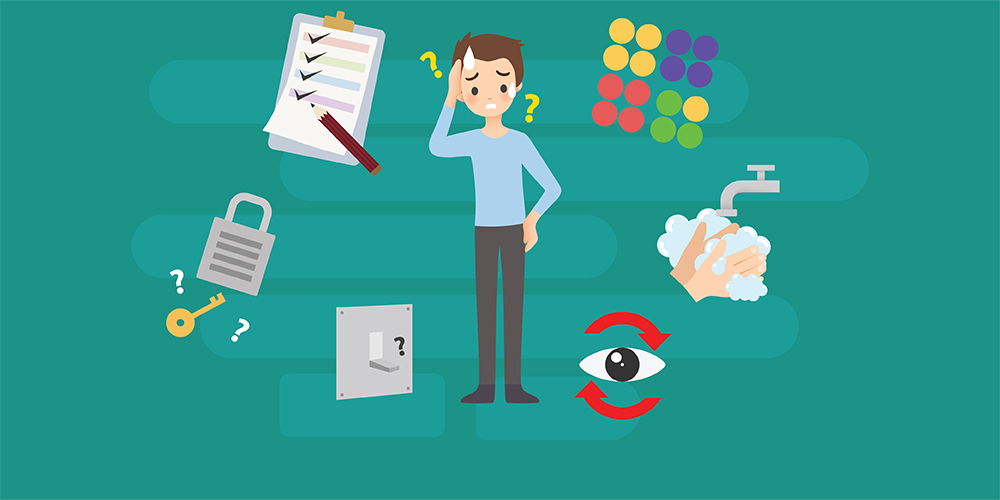Last Updated on October 21, 2024
Introduction
Contamination Obsessive-Compulsive Disorder (OCD), commonly known as contamination OCD, is often depicted as an overwhelming urge to clean and avoid germs. However, this portrayal oversimplifies the condition, failing to capture its complex and often misunderstood nature, which can significantly disrupt daily life.
To truly understand what contamination OCD is, read the blog and discover effective strategies for managing the condition and improving quality of life.
What is Contamination OCD?
Obsessive-Compulsive Disorder (OCD) is a mental health condition characterized by persistent, intrusive thoughts known as obsessions. These obsessions cause significant distress, prompting individuals to engage in repetitive behaviors called compulsions to alleviate their anxiety. Over time, these compulsions can become highly disruptive.
Contamination OCD, on the other hand, is a specific subtype of OCD where individuals are preoccupied with fears of contamination, such as contaminating themselves, contaminating others, or spreading germs. As a result, they may become fixated on behaviors like excessive hand washing, cleaning, and sterilizing.
While these fears may be rooted in realistic concerns, such as the risk of viral or bacterial infections, visible dirt, or exposure to toxic substances, they can also stem from irrational beliefs. For instance, some individuals may fear contamination from certain names, mental images, or specific locations.
However, the exact cause of this condition is not fully understood, but several factors including genetics, brain structure and function, and environmental influences are believed to play a role. Below are some of the common symptoms of the condition.
Read More: Existential OCD
Contamination OCD Symptoms
- Excessive hand washing or sanitizing
- Avoiding places or objects perceived as dirty
- Repeated cleaning of already clean items or self
- Refusal to touch objects or people due to contamination fears
- Frequent clothes changes or showers to remove perceived contaminants
- Fear of contamination from thoughts, names, or images
- Irrational fear of illness or spreading germs
- Repeated sterilization of perceived unclean items
- Withdrawal from social interactions due to contamination fears
- Repeatedly checking for cleanliness or contamination
Emotional Contamination in OCD – What You Need to Know
Emotional contamination in OCD can be tricky to spot because it doesn’t involve physical dirt or germs. Instead, it’s about feeling “contaminated” on the inside. People with this type of OCD worry that certain people, places, or objects have a negative emotional impact on them.
For example, someone might have unsettling thoughts or feel morally wrong without any physical contact with germs. They might fear that these thoughts will spread and make their environment “contaminated,” leading them to avoid certain things or do specific actions to prevent this from happening.
Risk Factors for Contamination OCD
Certain factors can increase the likelihood of developing this condition. These risk factors include:
- Family History: Having a close family member with OCD.
- Traumatic Experiences: Undergoing a significant traumatic event.
- Existing Mental Health Conditions: Having other mental health issues such as anxiety disorders, depression, or eating disorders.
Additionally, high levels of stress, such as from a divorce, the loss of a loved one, or experiencing physical violence, can intensify OCD symptoms or trigger their onset.
Strategies to Overcome Contamination OCD
| Strategies | Description |
|---|---|
| 1. Gradual Exposure | Gradually allow yourself to face feared situations or objects in a controlled manner to reduce anxiety. |
| 2. Challenge Negative Thoughts | Identify and challenge irrational beliefs about contamination, replacing them with realistic thoughts. |
| 3. Set Realistic Goals | Break down treatment goals into manageable steps and celebrate small achievements. |
| 4. Create a Supportive Network | Build a network of supportive friends, family, or support groups for encouragement. |
| 5. Limit Compulsions | Work on reducing and eventually stopping compulsive behaviors, such as excessive cleaning or hand washing. |
Treatment Options for Contamination OCD
The primary goals of contamination OCD treatment are to address:
- Thought Patterns: Changing the way one thinks about fears and obsessions.
- Emotional Responses: Managing how one feels in response to these thoughts.
- Behavioral Responses: Altering the behaviors that result from these thoughts and feelings.
Therapy
- Exposure and Response Prevention (ERP): A form of cognitive behavioral therapy (CBT) particularly effective for OCD. ERP involves gradually exposing an individual to the sources of anxiety in a controlled environment. As one encounters these triggers, the therapy helps one understand that compulsive behaviors are unnecessary and ultimately ineffective. Over time, this approach helps one build tolerance and reduce anxiety associated with the triggers.
Clinical Research
- OCD Clinical Research: Enrolling in OCD Clinical Research at Revive Research Institute could potentially help manage the symptoms of this mental health condition. Clinical Research explores novel therapeutic options for managing the symptoms of conditions like OCD. It also offers a supportive environment with enhanced patient care, where participants can feel seen and valued.
However, before pursuing any treatment options, it is necessary to consult a healthcare professional.
The Takeaway
Contamination OCD is a subtype of obsessive-compulsive disorder characterized by intense fears of contamination from people, objects, or environments. This condition involves intrusive thoughts about germs or dirt, leading to compulsive behaviors like excessive cleaning or avoidance of perceived contaminants. It can significantly impact daily life and affect both physical and mental well-being.
Various clinical organizations are actively conducting trials to explore and advance treatment options for this condition, with the goal of improving outcomes for those affected by this challenging condition. Participation in these trials can provide support to those struggling and help them feel seen and valued.





